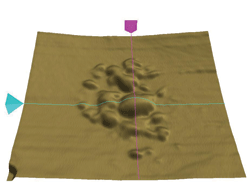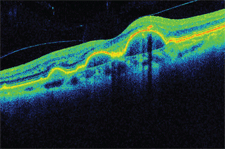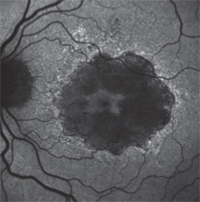In the panoply of optometric conferences, it used to be that “Vision Expo” was synonymous with “Frames Expo” to many ODs.

But in recent years, show organizers realized that more than 60 percent of its attendees were doctors in private practice engaged in medical aspects of eye care, and so ushered in the evolution of the semiannual conference as an emerging, formidable player in the continuing education of ODs.
This year’s Vision Expo West, scheduled for Oct. 2-5 in Las Vegas, continues that repositioning effort. “We really had to change our curriculum extensively to compete with other meetings,” says optometrist Kirk Smick, chair of the conference advisory board.
The educational program will feature 325 hours of CE, representing a wide spectrum of courses ranging from “Understanding Spectral Domain OCT,” to “Obamacare—Efficiency Through Technology.”
VEW, which is co-owned by Reed Exhibitions and the Vision Council, will feature two new clinical specialties this year: 14 hours dedicated to the diagnosis and treatment of glaucoma and the debut of a nutraceutical track.
Glaucoma: Beyond the Diagnosis
Many practicing ODs are adept at diagnosing glaucoma but tend to refer patients out for treatment. “So, we are trying to make it easier” for them to retain the patient, Dr. Smick says of the VEW glaucoma program.
“The technology is changing, the drugs are changing, the theories are changing,” he says. “If you’ve been testing the waters and are really ready to get going and get your feet wet, you can take this program and feel pretty comfortable about getting started in treating glaucoma patients.”
Optometrist Michael Chaglasian and ophthalmologist Harvey Dubiner will present two glaucoma treatment courses, “Treatment Decisions Part I” and “Treatment Decisions Part II.”

Using the RPE contour map with SD-OCT helps doctors see the topography of the RPE with retinal drusen and CNV formation. Photos courtesy of Jay Haynie, OD
The first session will discuss how to initiate therapy on patients with ocular hypertension, early stage open-angle glaucoma and normal tension glaucoma.
The duo will review key risk factors such as 24-hour IOP, ocular perfusion pressure, and disc hemorrhages through case presentations.
An overview of current topical medical therapy options will also be discussed, along with the concepts of target pressure and monocular trials.
In their second course, attendees will learn how to manage a glaucoma patient over the first few years of treatment. Drs. Chaglasian and Dubiner will also cover visual fields and OCT data, how to identify signs of disease progression, and what indicators prompt the need for additional medical therapy.
Options for adjunctive therapy along with their pros and cons will also be discussed, in addition to considerations such as when laser therapy or filtering surgery becomes an option.
Renowned lecturers Ron Melton, OD, and Randall Thomas, OD, will also take the stage in “Glaucoma Grand Rounds.” This team-taught course will offer numerous patient presentations in a case-study/grand rounds format. Drs. Melton and Thomas will emphasize the diagnostic work-up, assessment of risk, selection of drug therapy and follow-up care.
Glaucoma expert Murray Fingeret, OD, will be on hand to share his insights during course “Visual Fields and New Tests.” Dr. Fingeret will remind attendees that visual field tests are important in the diagnosis and management of glaucoma, and he will discuss the assessment of the visual field and signs of early loss, in addition to new forms of perimetry.
Of course, optometrists are often the best poised to first uncover undiagnosed glaucoma, as VEW presenter Leo Semes, OD, personally attests. “My grandfather was diagnosed with glaucoma when he went to his optometrist for a frame repair,” Dr. Semes recalls. “He was successfully managed and was seeing at the end of his life.”

Large drusen seen with SD-OCT.
Dr. Semes, who will co-present “Getting Comfortable with Glaucoma,” along with Richard Madonna, OD, says optometrists have the opportunity to document with fundus photography, for example, the status of the optic nerve in those who are suspicious for glaucoma based on any of the known risk factors.
These include elevated IOP as well as other clinical findings that may be characteristic of early glaucoma.
“Given suspicions, further testing is indicated to confirm or rule out glaucomatous damage,” says Dr. Semes. “Comprehensive clinical data collection, in addition to a complete history, can include stereo photographic documentation of the optic nerve and RNFL, visual field testing, pachymetry, serial tonometry and additional ancillary testing.”
| VEW 2013: Just the Facts |
|
The 25th annual International Vision Expo West will be held in Las Vegas Oct. 2-5, 2013 (education: Oct. 2-5, exhibition: Oct. 3-5) at the Sands Expo & Convention Center. The four-day conference will feature more than 325 hours of continuing education, focused on three core competencies — disease diagnosis, treatment and management; clinical application of products; and healthy business solutions. Attendees can visit 475 exhibitors featuring 5,000 brands in the 190,000 square feet of exhibit space. Onsite
navigation and technology: My Show Planner Online Tool and onsite
kiosks allows attendees to search for products and exhibitors, contact
exhibitors for appointments, and create agendas and maps of the floor
plan to ease navigation at the show.
With MyNetwork, a new feature this year, you can search for other registered attendees to expand network opportunities. Also, use Vision Expo Mobile ( www.visionexpomobile.com) through your mobile device to integrate your My Show Planner account. It also includes an interactive map. Additional details are available at www.visionexpowest.com. |
Eye on AMD and Nutraceuticals
In light of the new AREDS2 study results and the growing interest in ocular vitamins among patients and optometrists, VEW’s first-ever nutraceutical track will feature courses covering macular degeneration and nutritional supplements that impact both the front and back of the eye.
“While we think that the AREDS studies ‘prove’ that nutrition can make a difference in eyes that are already diseased, we also have the research to show some preventive aspects of many other nutritional supplements,” says Jeffrey Anshel, OD, who will present a course titled “The Power of Nutrition in Ocular and Systemic Health.”
Dr. Anshel will discuss the risks and benefits of supplements to your patients, plus information about dosing and product potency.
During course “The Anterior Segment and Nutrition,” Stuart Richer, OD, PhD, will teach attendees how to use natural substances to reduce inflammatory cytokines and activation of NFkB, particularly the role of essential fats and an individual’s 25 (OH) vitamin D liver reserve status in fighting disease.

Fundus autofluorescence image of atrophic AMD.
Another luminary on the lecture circuit, Paul Karpecki, OD, will present “Anterior Segment Considerations in Nutraceutical Therapy.” Dr. Karpecki will provide an understanding of the etiology, predisposing factors, diagnosis and treatment options for various ocular surface diseases where nutraceuticals have been shown effective, including dry eye and meibomian gland dysfunction.
Dr. Karpecki will discuss signs, symptoms, diagnostic testing and therapeutic management with an emphasis on nutrition.
Nutraceuticals’ role in the posterior segment will also be reviewed, with courses such as “Here is Why You Care About Posterior Segment Nutritional Supplements,” by Jeff Gerson, OD, who will explain why nutritional support is important in posterior segment disease, and how to set up plans of action. Dr. Gerson will also highlight the latest in clinical trials.
Also, as part of the Macular Degeneration and Nutritional Supplements track, optometrist Jay Haynie will present “Imaging and AMD,” wherein he will review current imaging options available, most notably the value of SD-OCT in diagnosis.
“AMD has become epidemic, and with the advances in technology, we are now able to diagnose wet AMD earlier with SD-OCT technology,” Dr. Haynie says. “In all of the studies looking at response to intravitreal therapy, the group that continues to do the best is those who are diagnosed earliest and the size of the choroidal neovascular membrane the smallest.”
“Dispensary is a very important part of our practice, so we want to make
sure the people who we have entrusted in managing it have excellent
education,” Dr. Smick says. Chief
Experience Officer (CXO) Certification Program: Customer service is one
of the strongest influencers of purchasing decisions. In this four-hour
course, learn how a CXO in your practice can drive and implement
exceptional customer service by differentiating your business from the
Internet and increasing patient satisfaction, loyalty and profits.
Several major corporations, including Procter & Gamble, have created
CXO positions, Dr. Smick says. “Our practices are also business units.
We need to make sure we invest in our patients and that they have a
positive experience.”
VEW: Beyond the Clinical
In addition
to its clinical CE emphasis, VEW offers innovative courses aimed at
boosting your practice’s bottom line and ensuring your patients’
satisfaction. Notable additions:
Frame
Buyer’s Certification Program: Your optical staff can take advantage of
18 hours of education that will help them streamline the process of
managing, monitoring, positioning and promoting your frame inventory,
including classes on eyewear trends and selection techniques, creating
and using tools to manage inventory, and reframing Rx limitations.

